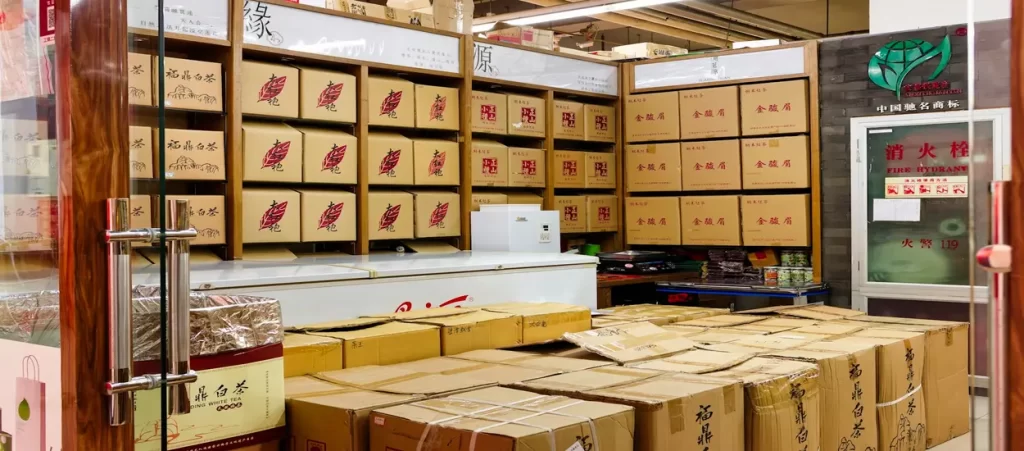China is home to affordable products with excellent quality. Undoubtedly, neighbouring countries would want to get their hands on these products. Japan is no exception. But how do you get these products to cross the 3K km gap?
The most economical and quickest way to travel from China to Japan is by taking a train followed by a flight, typically costing between $85 and $310 and taking approximately 5 hours and 44 minutes. The distance between the two countries is around 1,286 miles.
Importing products from China as a Japanese requires critical steps. This Japanese business import guide covers the needed information on importing goods.
Key Highlights:
- You must discover different sourcing channels beyond Alibaba. Attend trade fairs in China or connect with a specialised sourcing agent.
- Did you know the fastest China-Japan shipping takes only 10-12 hours? However, some businesses still choose sea freight, which takes weeks, and there is a reason for this.
- Japan’s 8% value-added tax isn’t the only number you need to know. Learning about import regulations can help you figure out the final product value.
- There are many high-demand products in the Japanese market. You need to think beyond electronics and clothing.
There seems to be a lot more to learn. Don’t worry! I will divide everything into steps to help you understand the sourcing process.
Seven Actionable Steps to Import Your Products from China to Japan

Much like any process, your import from China requires a series of steps. Knowing these steps allows you to navigate importation for the best results. Here is how to do so:
Step 1: Research China and Japan Trade Laws
Ensure you are familiar with the regulations regarding importing into Japan from China. Both nations have specific laws.
Moreover, these laws aren’t stagnant, as they are reviewed regularly. Hence, before you leap to import, familiarise yourself with Japanese import regulations.
Step 2: What Do You Want to Import
You must know if the product you want to import will be well-received by the Japanese market. Hence, thorough market research is necessary to ensure the best outcomes.
Check if the product you intend to sell has a thriving market. You can browse by using research tools or ask established businesses for recommendations.
You should also know about the Chinese markets, I wrote a complete guide that you can use to familiar yourself with the main Chinese wholesale market cities.
Step 3: Pick a Suitable Supplier
Possibly the most critical part of importing is finding suitable Chinese suppliers. Fortunately, it is straightforward. It only requires a little grit, and you will connect with the right supplier in no time. Here are the different places we recommend you start your search from:
- A Chinese sourcing agent
- B2B platforms such as Alibaba
- Trade fairs
- Recommendations from the freight company
- Search directly on search engines, such as Google.
Knowing where to look is simple. However, knowing what to look for is a real task. Suppliers offering affordable prices are not enough.
Other crucial metrics are necessary to pinpoint the best option. Sourcing products from China to Japan demands the best suppliers.
Get the Best Deal: You need a supplier that offers a good price and quality. You can perform quality control in China for imports to ensure you get quality. Also, negotiate for reasonable prices by requesting more products.
Never shy away from walking away from a bad deal. When the supplier’s demands don’t match yours, excuse yourself. You can’t exhaust Chinese suppliers before you get a good deal.
Ask for Certifications: It is one of the many ways to ensure you aren’t walking into a bad deal. There are several certified Chinese suppliers for the Japanese market. Ask for certifications to know if you can trust the supplier’s standards.
If you plan to buy from Alibaba, make sure you read my detailed post on the reality of Alibaba’s verified suppliers.
It is beneficial to strive for a favourable supplier to maximise your profit margin. Moreover, suitable suppliers ensure a stress-free process. But I admit it can be a headache trying to verify China vendors. There is also the risk of falling victim to scammers.
Hence, I recommend you take the easier route by choosing a global supply chain provider to take care of this process.
Step 4: Find A Good Shipping Method

Choose a suitable shipping mode to match your needs. Usually, the method you want depends on urgency, budget, and delicacy. I recommend air freight service from China for urgent and delicate deliveries.
However, you can opt for sea shipping from China for less urgent and heavy products. Moreover, ship freight is more pocket-friendly. Find the best option for shipping from China to Japan.
Step 5: Research the Import Tax Regulations
You want to ensure you are in the loop regarding the import taxes in Japan. Knowing these taxes ensures a seamless experience at the customs checkpoints. Undoubtedly, the surprises you get along the way can be nasty for business, as they cause delays.
Have you read my old post – import from China to the USA? I suggest you check it to see how import tariffs from China to the US affect the final product amount. You will face similar or slightly different tariffs on your imports from China to Japan.
Step 6: Customs Clearance
Clearance of the goods is a crucial aspect of importation. This process is usually done by the owner of the goods, you, or a representative. Custom might be ambiguous to you as a new member of the game. However, it is pretty straightforward. Here are the steps required for customs clearance:
Fill out the necessary information for the customs website.
- Printing the correct documents and declaration
- Assessing the imported goods
- Getting the required permits
- Paying the dues
- Sending the goods to the warehouse
- Exit of imported goods
Step 7: Employing A Reliable Freight Forwarder
Shipping between countries can get sticky if you aren’t well-informed. Hence, you must hire a reliable freight forwarder to deal with the tough work.
A reliable freight forwarder deals with the products’ transportation from start to finish.
Available Shipping Methods from China to Japan
When you buy a product, you want it to get to you. I mean, how else will you resell for profit? Hence, shipping is crucial. If you are new to the game, the available shipping methods might be foggy. I recommend you hire a China shipping agent to handle it.
Here is an overview of the various shipping routes you can take:
1) Express Shipping
Express shipping is the quickest route to import products from China to Japan. It usually takes around 10 to 12 hours. Several couriers offer this option, including UPS and FedEx.
They ensure the products get to their desired Japanese location. This method is worry-free and fast, but it is more expensive than the alternatives.
2) Air Freight Shipping

Air freight is a fast option as it ensures imports get their goods in 1 to 3 days. It is also excellent for valuable products. The products spend less time in transit, which reduces the likelihood of damage. Popular air freight companies are Federal Express, UPS, and China Airlines.
However, it is more expensive and leaves a larger carbon footprint than alternatives. You will also have to add extra fees to transport the products from the airport.
3) Sea Freight Shipping
Sea freight is a widely accepted shipping option, and it’s no surprise. It is the cheapest of the three transport options and has a low carbon footprint. However, it trades off speed for price. The timeline is the major downside to ship freight.
Still, this option is perfect for heavy items like machinery or industrial parts. The time can take anywhere from 5 days to a couple of weeks.
Finally, the cost of all three methods depends on some variables. These variables are the weight, dimension, and type of the cargo. Factors such as distance and type of services are also important.
You can choose the best shipping method based on the following table.
| Features | Express Shipping | Air Freight | Sea Freight |
| Delivery Time | 10-12 hours | 1-3 days | 5-14 days |
| Cost | Highest | Moderate | Lowest |
| Best For | Urgent deliveries, small packages | Valuable items, time-sensitive cargo | Heavy items, bulk orders, industrial parts |
| Carriers | UPS, FedEx | Federal Express, UPS, China Airlines | Various shipping lines |
What Items Are Most Imported from China to Japan?

Finding the most imported products can shed insight on what to add to your shopping cart. Here is a concise list of those items:
- Electrical equipment
- Home appliances, such as computers
- Clothing
- Baby food
- Leather products
- Jewelry
- Luggage
- CCTV
- Electronic cables
- Batteries
You can further your research by checking Chinese wholesale websites for trending products. You can also ask freight forwarders and other importers for recommendations.
Read More:
- How to Source Products From China?
- Best Ways to Reduce Shipping Costs on Alibaba
- Alibaba Sourcing Agent
- Find Company Information on Alibaba
Final Thoughts!
Importing goods from China to Japan can be a hassle. There are several steps to get a grip on, from sourcing suppliers to shipping. However, there is an easy way out. You can use a China sourcing service to streamline the exhaustive process.
Contact us today to get the best agent on the market. We offer affordable and quality services. Moreover, we ensure you get the best experience while you have a worry-free time. So you have time to handle other parts of your business.
FAQs:
1) What Is the Import Duty From China to Japan?
Japanese customs impose an 8% value-added tax on their imports. While this is the import duty, it can vary depending on the product being imported. Hence, it is crucial to remain conversant with the tariff rates.
2) What Does Japan Import the Most From China?
Japan imports several items, from air conditioners to importing clothing and textiles from China. However, the top products are home appliances, like laptops and kitchen utensils. Japan also imports many smartphones and rare earth minerals.
3) What Is the Quickest Shipping Option to Japan?
If you mean route, air freight is the fastest. It delivers products in 1 to 3 business days, but it costs a lot. However, if you are referring to freight carriers, there are many notable options. Popular options are UPS, FedEx, and DHL. These carriers have decent shipping speeds.
4) What Items Are Prohibited From Being Imported Into Japan?
You can’t import just any item from China into Japan. According to Japan’s customs, there are some restrictions. Some notable mentions are medicine, firearms, pharmaceuticals, and agricultural products.
5) Where Can I Find Chinese Suppliers?
You can find a manufacturer in China using several reputable sources. Popular routes include e-commerce platforms such as Alibaba and trade shows. Other notable routes are asking for recommendations from freight suppliers. Lastly, you can use Chinese sourcing agencies, like OwlSourcing.


